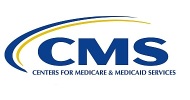OIG Releases 2017 Work Plan
HHS OIG Releases 2017 Work Plan-Two Longstanding Objectives in Orthotics Remain; No Other/New Prosthetic or Orthotic Items Listed
Each year, the HHS Inspector General releases its annual Work Plan, which lists the topics where the OIG believes there are significant potential items of fraud or other inappropriate or inefficient operations by HHS (including CMS and Medicare) that are costing the government money. This week, the OIG 2017 Work Plan was released.
There are no NEW O&P items listed on the new OIG 2017 Work Plan. However, there are two significant orthotic items for scrutiny that have been part of the OIG Work Plan for the past few years still remain. The following items continue to be highlighted by the OIG:
Orthotic Braces – Reasonableness of Medicare Payments Compared to Amounts Paid by Other Payers
Since 2009, Medicare payments for orthotic braces, including back and knee, have more than doubled almost tripled for certain types of knee braces. We will determine the reasonableness of Medicare fee schedule amounts for orthotic braces. We will compare Medicare payments made for orthotic braces to amounts paid by non-Medicare payers, such as private insurance companies, to identify potentially wasteful spending. We will estimate the financial impact on Medicare and on beneficiaries of aligning the fee schedule for orthotic braces with those of non-Medicare payers. OAS: W-00-17-35756; various reviews Expected issue date: FY 2017
Orthotic Braces – Supplier Compliance with Payment Requirements
Medicare requires that suppliers’ claims for DMEPOS be “reasonable and necessary” (SSA § 1862(a)(1)(A)). Further, local coverage determinations issued by the four Medicare contractors that process DMEPOS claims include utilization guidelines and documentation requirements for orthotic braces. Prior OIG work indicated that some DMEPOS suppliers were billing for services that were medically unnecessary (e.g., beneficiaries receiving multiple braces and referring physician did not see the beneficiary) or were not documented in accordance with Medicare requirements. We will review Medicare Part B payments for orthotic braces to determine whether they were medically necessary and were supported in accordance with Medicare requirements. OAS: W-00-17-35749 Expected issue date: FY 2017
These were the subject of an extensive memo to AOPA members last year. AOPA included comments about the OIG’s concerns about not being the lowest payer for orthotic bracing. This was accompanied by a memo written by health care consulant McGuire Woods. Read AOPA’s comments. Read the McGuire Woods memo.
Read the entire OIG 2017 Work Plan.
How the New Trump Administration Will Impact The OIG Priorities and 2017 Work Plan
It is worth noting that with the new Trump Administration we will almost certainly have a new HHS Secretary, and a new CMS Administrator. There is less certainly about whether there will also be a new HHS OIG, as there is some precedent for trying to keep OIG positions non-political. But there is also the chance that this 2017 OIG Work Plan evolves into something a bit different with the expected changes for health care foreseen for 2017.
